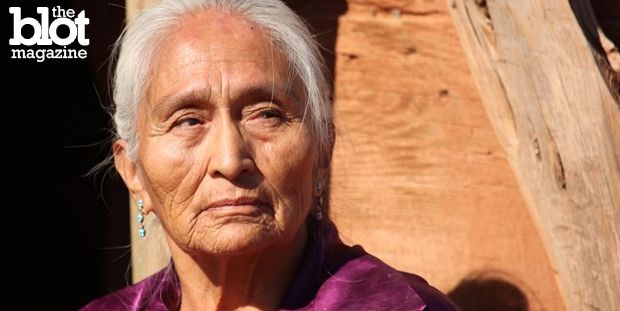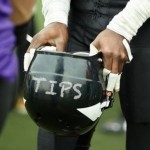With election campaigns gearing up, statistical information about health, education and social services for the less-than-well-off are everywhere, yet there seems to be a group that is always left out of these demographics.
The Native American population is one of the most ignored and criticized mass of displaced individuals to ever walk the landscape of America. They suffer from the highest rates of suicide, infant death, drug addiction, sexual and violent assault and extreme poverty than any ethnic group in the United States. The inequality of employment opportunities, lack of proper medical care to include mental health and predisposed medical conditions and lack of proper jurisdiction to handle criminal prosecution of non-tribal individuals is a horrific injustice against Native Americans, one that is never properly addressed but simply swept under the rug like a shameful remnant of a past we’d like to forget.
It’s time we start talking about the plight of our own indigenous people and bring to light their struggle — which we are directly responsible for.
Read more: Oak Flat Land Grab No Longer an Apache Issue — It’s an American Issue
The Casino Myth
When the topic of Native Americans is brought up, the first word that pops into most of our heads is “casinos.” A very broad and widely cherished belief with Native American culture is one that “Indians” make bank every day from the constant flow of money coming in from casino ownership. It’s cherished because it makes most of us feel better about what happened during the days of territorial accusation and the known health, social and economic crises on reservations being neglected even today. The statistics show a far different reality for the few tribes that have access to gaming profits.
Here are a few bits of truth to keep in mind when discussing matters of tribes and profits:
First, profits from gaming enterprises, be they full-fledged casinos or simple bingo halls, must go to improving reservation communities. The Indian Gaming Regulatory Act requires that
“revenues go toward: tribal government operations, promotion of the welfare of the tribe and its citizens, economic development, support of charitable organizations, and compensation to local non-Native governments for support of services provided by those governments.”
Keep in mind that only 30 states allow gaming enterprises, with 16 states having no federally recognized tribes and four states that flat-out deny Native Americans the opportunity to have them. Also, while 68 percent of Native Americans belong to a tribe with ties to gaming operations, it necessarily doesn’t mean they are successful ones. The Pine Ridge Indian Reservation in South Dakota, the second largest reservation in America, attempted to revitalize its economy with gambling, only for it to be a complete failure, creating a mere 80 jobs and adding nothing to the local economy. Location is everything, and with most reservations in outlying areas, the ability for every Native American to profit from these establishments is unrealistic. Not to mention there are 550 federally recognized tribes in the U.S., yet only 224 tribes are able (to varying degrees of success) to profit from casinos and use the funds to improve reservation conditions. That leaves a lot of indigenous people out in the proverbial cold.
It does need to be mentioned that certain tribal governments have chosen to use profits from gaming to pay per capita payments to individuals on reservations. Due to the negative consequences being seen through this particular distribution of funds, such has higher school dropout rates, high crime rates and higher unemployment rates, tribes are now penalizing reservations with reductions in payments that have shown little enforcement of school attendance or have higher crime rates. Some reservations don’t actually have their own jails and must rent them from other governments; tribal governments will penalize criminals as a way to recoup some of the money from renting the jail. Reservations that have been penalized have shown some social improvement, but overall are still higher than the national average on dropout rates and violent crimes against women.
Read more: Stepping on Sacred Ground: Defense Bill Includes Native American Land Grab
Healthcare Services Are Lowest In the Country
Per the Centers for Disease Control and Prevention, the number of Native Americans below the age of 65 without health insurance is 27 percent with 14.3 percent of the population considered as being in fair to poor health. When you consider the population of Native American and Native Alaskan — which are two indigenous North American groups studied as a single entity — is only 4.5 million people (as of 2013), that number is staggering. A study performed by the Kaiser Family Foundation for the federal government regarding disparities in healthcare coverage for American Indians and Native Alaskans show that while the government has programs available to cover some costs, not all Native Americans receive federally funded healthcare assistance, including Medicaid. With their population having the highest rates of suicide, infant death, diabetes, heart disease and unintentional deaths (presumably linked to the high rate of alcoholism among Native Americans), access to proper funding and healthcare should be paramount with regard to government funding for tribes. (Considering every single treaty the American government has made with each and every native American tribe, it shouldn’t be a surprise that healthcare, including mental health services, is a grossly overlooked and rarely mentioned topic.)
Tribal Economies
On average, the unemployment rate on reservations averages 25 percent while some tribes has seen it as high as 69 percent. The average rate of unemployment among the U.S. population is only 6.7 percent. The average household income for Native American households is less than half of the general population, with 20 percent of Native American households living on $5,000 a year while only 6 percent of the U.S. population makes as much.
Even with per capita payments, individuals who are living on reservations that have a prosperous gaming establishment and are receiving payments directly on average see less than $8,000 in additional income. While tribes in more-populated areas are seeing some financial gains, overall the Native American population still lives in deplorable conditions with little access to health, public institution, education or employment services.
Their plight is one of suffering, one of shame and one of gross civil violations on a level no one seems to want to admit to, one that gets caught up in red tape, legalities and governmental overreach. Please remember this when you roll your eyes at their outrage over the names of sports teams and mascots that disparage their cultural and tribal ways.
Diana Marsh is a contributing journalist for TheBlot Magazine.






